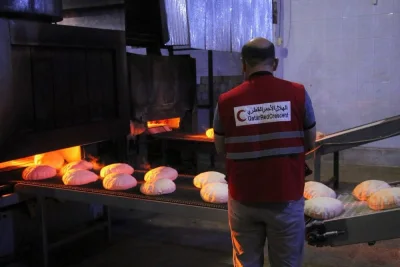Energy projects worth $622bn are planned in the Mena region over the next five years, Arab Petroleum Investments Corporation (Apicorp) has said in a report.
Apicorp estimates that energy projects worth $337 were underway in the Mena region in 2017. In 2018, the level of committed Mena projects increased to $345bn, but the planned projects decreased to $574bn.
“This decrease is due to the ongoing downward revisions to supply and demand needs, changing export strategies, reform programmes affecting local markets’ strained government finance,” Apicorp’s chief economist said in an outlook.
The world is gradually building its 21st century’s energy system, in which fossil fuels and renewables will coexist, the report noted.
Gas, the “fastest growing and ubiquitous” fuel, with renewables, thanks to a battery of policy support measures, account for 35% of the world’s primary energy consumption, Apicorp said.
In terms of liquefied natural gas, the report noted the LNG industry seems to have emerged from the “investment impasse” of 2016-2017 (5-10mn tonnes per year (mtpy) of Final Investment Decisions FIDs per year versus 20-30 mtpy during 2011-2014), thanks to the marketing structure adopted by LNG Canada’s sponsors.
However, it said long-term contracting is still a major requisite for investment decisions.
“US LNG positioning, coal demand, among others, will dictate whether we face a future glut or not. This will affect prices and inter-fuel competition, including in Mena where LNG imports fell 41% in 2018, and in other growing energy markets,” Apicorp said.
It sees “fundamentals to continue to govern oil prices in the face of a highly volatile market.”
The consensus view is that US production will grow by around 1.2mn barrels per day in 2019. The ‘Permian’ has room to expand production, depending on how operators and service companies will manage debottlenecking and ‘Drilled but Uncompleted Wells’ (DUCs).
Opec+ (Opec and allies) cuts try to balance the market in the short term. By the second half of 2019, Brent would trade between $60-70/b, barring a sharp economic slowdown. Then, if additional supply growth materialises in a context of weaker demand, it might get back to “lower for longer”, Apicorp said.
In parallel, the International Energy Agency (IEA) says global energy investment declined for the third consecutive year in 2017 to $1.8tn.
“Among the traditional energy players, we see a new cycle of convergence and integration between upstream, downstream and utilities. Clean and digital energy still represents less than 3% of capital spend since 2010 by oil and gas companies,” Apicorp said.
However, with climate concerns, all players are investing to reduce the carbon intensity of their operations and their products lifecycles. Diversification into mobility, logistics, petrochemicals, utilities and storage, is driving the strategies of several majors and NOCs.
Despite more capital discipline expected in 2019, the US energy industry, including unconventional, continues to have relatively easy access to capital, through publicly issued securities, foreign backers and domestic private equity.
“The picture in the rest of the world is mixed,” Apicorp said.
“This decrease is due to the ongoing downward revisions to supply and demand needs, changing export strategies, reform programmes affecting local markets’ strained government finance,” Apicorp’s chief economist said in an outlook.
The world is gradually building its 21st century’s energy system, in which fossil fuels and renewables will coexist, the report noted.
Gas, the “fastest growing and ubiquitous” fuel, with renewables, thanks to a battery of policy support measures, account for 35% of the world’s primary energy consumption, Apicorp said.
In terms of liquefied natural gas, the report noted the LNG industry seems to have emerged from the “investment impasse” of 2016-2017 (5-10mn tonnes per year (mtpy) of Final Investment Decisions FIDs per year versus 20-30 mtpy during 2011-2014), thanks to the marketing structure adopted by LNG Canada’s sponsors.
However, it said long-term contracting is still a major requisite for investment decisions.
“US LNG positioning, coal demand, among others, will dictate whether we face a future glut or not. This will affect prices and inter-fuel competition, including in Mena where LNG imports fell 41% in 2018, and in other growing energy markets,” Apicorp said.
It sees “fundamentals to continue to govern oil prices in the face of a highly volatile market.”
The consensus view is that US production will grow by around 1.2mn barrels per day in 2019. The ‘Permian’ has room to expand production, depending on how operators and service companies will manage debottlenecking and ‘Drilled but Uncompleted Wells’ (DUCs).
Opec+ (Opec and allies) cuts try to balance the market in the short term. By the second half of 2019, Brent would trade between $60-70/b, barring a sharp economic slowdown. Then, if additional supply growth materialises in a context of weaker demand, it might get back to “lower for longer”, Apicorp said.
In parallel, the International Energy Agency (IEA) says global energy investment declined for the third consecutive year in 2017 to $1.8tn.
“Among the traditional energy players, we see a new cycle of convergence and integration between upstream, downstream and utilities. Clean and digital energy still represents less than 3% of capital spend since 2010 by oil and gas companies,” Apicorp said.
However, with climate concerns, all players are investing to reduce the carbon intensity of their operations and their products lifecycles. Diversification into mobility, logistics, petrochemicals, utilities and storage, is driving the strategies of several majors and NOCs.
Despite more capital discipline expected in 2019, the US energy industry, including unconventional, continues to have relatively easy access to capital, through publicly issued securities, foreign backers and domestic private equity.
“The picture in the rest of the world is mixed,” Apicorp said.




